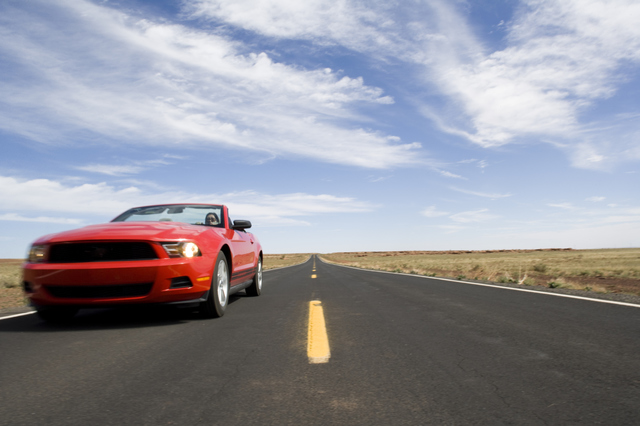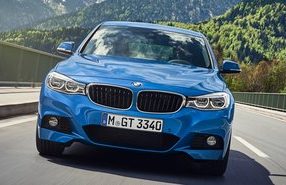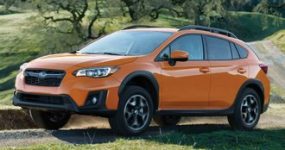Whether you’re looking to upsize to larger wheels for the performance benefits, downsize for snow tires, or just going for a unique look for their car, there are a number of details that you must get right to ensure proper fitment and safety. One of the easiest and most effective ways for an owner to change the look and feel of a car is to change the wheels, and that often means changing the size.
According to Tire Rack, “An accurate fitment is the difference between good, better and best. Critical wheel dimensions such as width, diameter, offset, center bore, brake clearance, as well as load factor and lug hardware are the basics when it comes to properly fitting aftermarket wheels.”
Upsize or Downsize:
There are some very good reasons for either upsizing or downsizing wheels, depending on what the customer is looking for. Going to larger wheels up to 18” can positively affect things like cornering grip, braking performance, ride comfort and steering feel, while somewhat negatively impacting acceleration and fuel economy due to the greater unsprung weight of larger wheels. At 19” and beyond, however, the positive handling effects start to go away, while acceleration and fuel economy get worse, so those really big wheels are best installed just for looks. Downsizing, on the other hand, is generally a good idea for that extra set of wheels with snow tires on them. Smaller, narrower tires perform much better on snow and ice, and snow tires smaller than 17” are usually quite a bit less expensive.
Keep in mind that when changing the diameter of the wheels, the width will also usually change, and this can cause problems if you’re not careful. In general, there will be at least a half-inch change in width for every inch change in diameter, so going up an inch from a 15 x 6” wheel to a 16” wheel will generally put you at 16 x 6.5”, but if the new wheels are 16 x 7” that might be too wide to clear the suspension.
If you’re getting aftermarket wheels from an online retailer, they will often do most of the sizing calculations for you to prevent this, but if you have to do it yourself, the folks at WheelSizeCalculator.com can give you an incredible array of useful data for any make and model, including proper offset, hub diameter, bolt pattern and wheel width for each possible tire and wheel size.
Something to watch for especially when downsizing is the brake clearance on the vehicle. Some high-performance cars have oversized brakes or aftermarket brake kits that will not accept smaller wheels. If you are unsure of brake clearance, test-fit the wheels before mounting tires on them, so that the wheels can be returned if necessary. You will also want to watch out for cars with “staggered” setups in which the rear wheels are wider than the fronts, mostly found in BMW and Mercedes. In terms of wheel fitment, you can usually put the width for the narrower front wheels on all four points if you absolutely have to, but you can’t ever put the wider rear wheel size on the front or the wheels will rub.
Bolt Pattern:
Getting the proper bolt pattern is pretty obviously important when fitting new wheels, since if the pattern is wrong you’re just not going to get very far in trying to install them. Most of the time, bolt patterns are pretty easy. Patterns are expressed by the number of bolts and the distance across the center of the pattern, either in inches or millimeters, as in 5 x 4.5” or 4 x 100mm. Data can generally be found for the year, make and model of the customer’s car in the Tire Guide, the Hollander Book or in the car’s manual. The wheel’s bolt pattern is usually embossed on the back. Bolt pattern gauges are also available for when a wheel’s particular pattern is unknown. There is, however, one thing that can trip up even experienced technicians – the difference between 5 x 4.5” and 5 x 115mm, or between 5 x 4.75 and 5 x 120mm. These patterns differ by less than a millimeter, little enough that one will generally fit on the other. But even while they will fit, they do not interchange. Torquing the wrong pattern onto the car will usually bend the bolts just slightly and probably cause a vibration that can be very difficult to diagnose. Handy rule of thumb: BMW’s, unless they are really old, are all 5 x 120mm, and no other car uses that pattern. Not so handy rule: 5 x 4.5” is usually either American or Japanese; 5 x 115mm is usually either European or Japanese.
Hub Center Bore:
The hole in the center of wheel where the center cap goes is the wheel’s hub center. OEM wheels are designed so the the hub center bore matches the diameter of the axle exactly to ensure a tight fit. This is critically important, as it is this “hub-centric” connection which centers the wheel precisely on the rotor, and in most cases actually carries the weight of the car, while the lug studs simply hold the wheel against the rotor plate.
Most aftermarket wheels are designed as “lug-centric”, meaning that the center bore will usually be wider than the car’s hub. These wheels should be installed with centric rings, or “spacers” that make up the difference between the wheel’s center bore and the vehicle’s hub.. There is a longstanding and sometimes acrimonious debate regarding whether installing lug-centric wheels without centric rings is acceptable. Tire Rack feels that lug-centric installations are fine as long as the wheels are correctly centered, noting that “With these [lug-centric] wheels it is critical to torque the lug hardware with the vehicle on jack stands, off the ground. This allows the nuts or bolts to center the wheel and torque down without the weight of the vehicle pushing them off center.”
I do not agree. While that technique will probably center correctly, I have personally seen innumerable lug-centric installations cause vibration, stud damage and even irreparable damage to the center bore caused by the hub jarring against it, because the studs are not strong enough by themselves to hold the wheel laterally against the weight of the car and deal with impacts. This is obviously my own opinion, but I would also suggest that there is no real advantage to taking the risk of a lug-centric installation when spacers are extremely inexpensive and easy to install. I strongly advise using hub-centric rings whenever possible.
Related posts:
No related posts.






Recent Comments